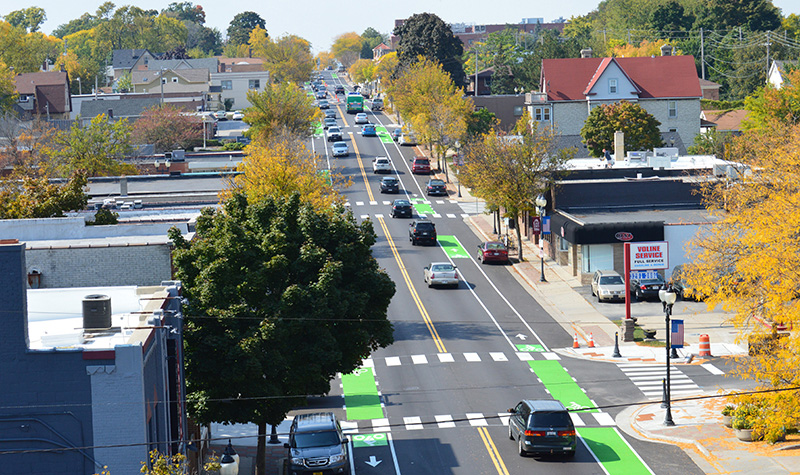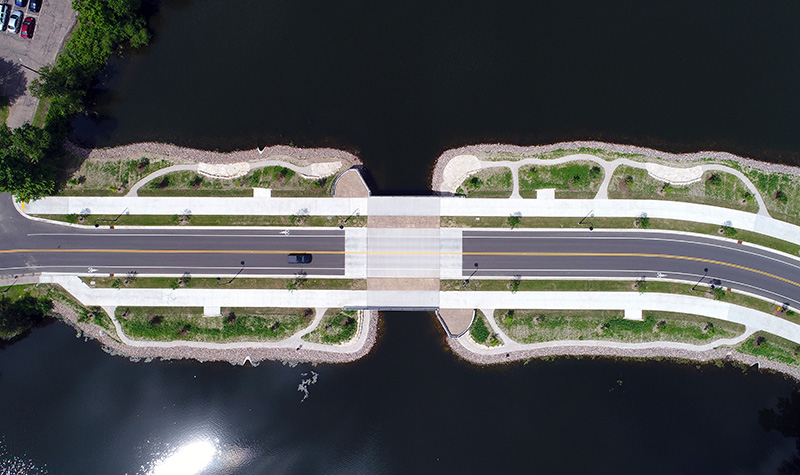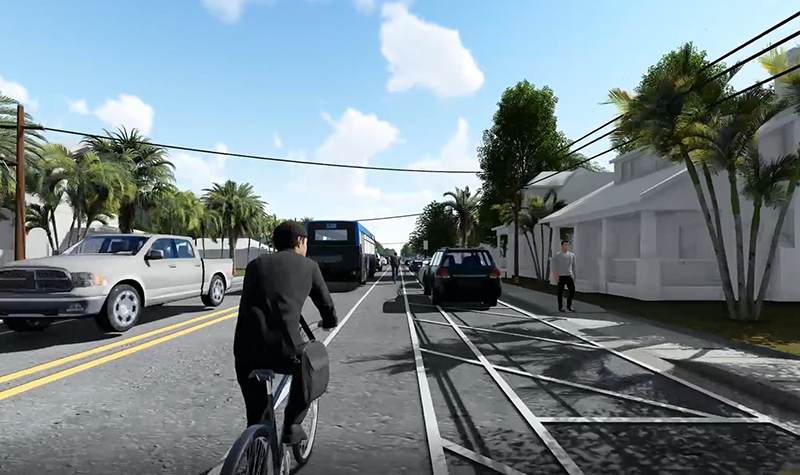Complete Streets Can Address Aesthetic, Environmental Concerns
Complete Streets are created for everyone. Traditionally roadways were primarily designed for motor vehicles. Over time, roadway design has evolved to include multimodal transportation concepts and features.

About the Expert:
Jeffrey Siewert, PE, is a project manager in the Tampa-Hidden River Parkway office in Florida. Complete Streets elements are part of many of his projects, including the Tampa Columbus Drive and 46th Street projects.
The forerunner of Complete Streets policy was introduced in 1971 by the Oregon Department of Transportation, which required that new roads accommodate bicyclists and pedestrians. Since then, the National Complete Streets Coalition, which launched the movement in 2004, promotes the development and implementation of Complete Streets policies and professional practices. To date, over 1,501 agencies at the local, regional, and state levels have adopted Complete Streets policies, totaling more than 1,600 policies nationwide, according to Smart Growth America.
What is a Complete Street?
Complete Streets use a transportation policy and design approach that requires streets to be planned, designed, and constructed to facilitate safe access for all users, including pedestrians, bicyclists, and transit riders of all physical capabilities. According to the U.S. Department of Transportation, the shift toward using Complete Streets provides a measure of the overall transformation of planning and engineering approaches over time. The focus of road design is no longer entirely about auto mobility but is about creating a broad network that serves all users.
 A Complete Streets approach encourages safe mobility for all users by providing places to walk, cross the street, catch a bus or a taxi, or pedal a bicycle. These accommodations help improve safety, promote active transportation, improve health, lower transportation costs, provide transportation alternatives, ease congestion, and create a sense of community. Creating a livable community is the result of implementing a context-sensitive design approach and using specific infrastructure elements that enhance the safety and operational characteristics of a street.
A Complete Streets approach encourages safe mobility for all users by providing places to walk, cross the street, catch a bus or a taxi, or pedal a bicycle. These accommodations help improve safety, promote active transportation, improve health, lower transportation costs, provide transportation alternatives, ease congestion, and create a sense of community. Creating a livable community is the result of implementing a context-sensitive design approach and using specific infrastructure elements that enhance the safety and operational characteristics of a street.
Each Complete Street is unique to its community: It can look much different in a rural area than in a highly urban area. The street can include sidewalks, public transit accommodations, bicycle accommodations, neighborhood greenways, traditional and raised crosswalks, and traffic calming or “taming” measures to help manage vehicle speed.
How does landscape architecture enhance Complete Streets?
Landscape and environmental elements are as important as the roadway and utility engineering tasks associated with a Complete Streets project. A primary goal of a Complete Streets plan is to provide an aesthetically pleasing yet functional thoroughfare that fits into the land-use context. Integrating landscape architecture concepts into a Complete Streets plan can help the project come full circle – using greenery and permeable pavement as part of a stormwater management plan, for example.
Smart Growth America says communities are recognizing the “green” potential of their streets, and it calls Complete Streets a natural complement to sustainability efforts that bring benefits for mobility, communities, and the environment.
Some communities have undertaken the task of redesigning urban corridors into “street parks,” where cars, bicycles, and pedestrians mix. “Woonerf,” Dutch for a street that has no curbs and is designed for intermingling, purposefully creates an ambiguous zone where everyone is more vigilant, actually making the street safer. Small parklets can be integrated to include café tables, play structures, park benches, etc., setting up a “front porch” vibe within an urban area.
 Other landscape architecture and environmentally conscious concepts could include tree belts, bioswales, planters, rain gardens, and specialized tree wells to filter stormwater for reuse in irrigation – a concept that was implemented in the City of Tampa’s East Columbus Drive project.
Other landscape architecture and environmentally conscious concepts could include tree belts, bioswales, planters, rain gardens, and specialized tree wells to filter stormwater for reuse in irrigation – a concept that was implemented in the City of Tampa’s East Columbus Drive project.
For the City of Tampa’s Spruce Street ditch enclosure project, an underwhelming, overgrown right-of-way in an up-and-coming residential area is proposed for conversion to an environmentally sustainable linear park. The project is in a densely populated area of extensive redevelopment in mid-city Tampa tailored to millennials – all the more reason to create an entirely new recreation area using low-impact design elements to ultimately help protect a 250-acre watershed.
Putting Complete Streets ideals into practice
In 2011 the City of Tampa developed an InVision Center City Plan, a master plan for Tampa’s Center City, which spans from the downtown area to Ybor City on the east, Armenia Avenue on the west, and north along historic Nebraska Avenue to Hillsborough Avenue. The Center City Plan proposes roadway “right sizing” and traffic rebalancing to provide safe, walkable, and bikeable neighborhood connectivity. This will support the neighborhoods of Tampa’s Center City in making these locations a more attractive address for residential and commercial investment by enhancing livable transportation.
As part of this plan, the City of Tampa selected Ayres for the design of two Florida Department of Transportation Local Agency Program (LAP) funded walk-bike projects – Columbus Drive from Nebraska Avenue to 14th Street and 46th Street from Busch Boulevard to Fowler Avenue.
You can also see Complete Streets concepts at work in these projects:
- Eau Claire Grand Avenue Half Moon Lake Bridge
- Oconto Falls STH 22 Reconstruction
- SR 13 (San Jose Boulevard) Resurfacing
- Wauwatosa East North Avenue Bike Lane Plan
- Waukesha CTH L Improvements
For more about Complete Streets, contact Jeffrey Siewert or any of Ayres’ transportation project managers. Learn more about sustainable Complete Streets development.

 By
By
Post a comment: